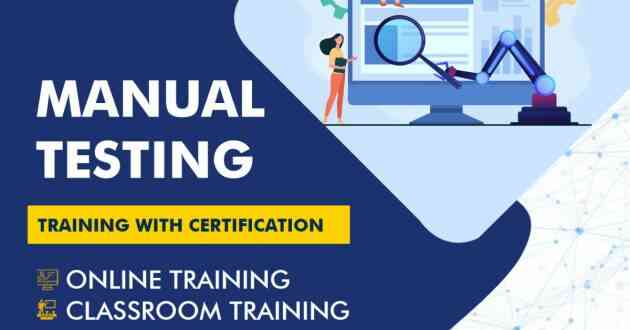Making A Shift From Manual To Automated Testing
Moving to automated testing is essential for businesses to deliver outcomes as envisaged by the Agile-DevOps paradigm.
With quality or the lack of it driving the success (or otherwise) of a software product, business enterprises have their task cut out – implement the Agile-DevOps model of quality assurance in the value chain. The focus is to execute a testing methodology that is effective, time and cost saving, and delivers customer satisfaction. This is where the effectiveness of manual testing (the existing practice in many organizations) comes into question with companies looking to enhance the quality of their products and reduce their operational expenses. The realization that manual testing can be a drain on resources comprising money and manhours, enterprises are looking at automated testing to maximize efficiency and optimize the use of available resources. However, let us first understand what ails the manual testing process in today’s time of competitive quality assurance.
Manual testing and its shortcomings
- Increased frequency of human error leading to non-identification of hidden glitches.
- Repetitive nature of work leadin to fatigue among human testers.
- The slow speed of testing leading to missed deadlines
- The comprehensive testing of every parameter of a software application across platforms becomes difficult. Testers take shortcuts to meet project deadlines, thus reducing the scope of testing.
- Testing cannot take place beyond official hours and on off days.
So, how does automated testing fare in the larger scheme of things?
- Better and early identification of glitches in the production cycle.
- Reduces the testing time drastically.
- Eliminates mundane and repetitive tasks, thereby boosting efficiency.
- Speeds up the delivery cycle.
- Facilitates specific types of testing like regression and performance where simulation of concurrent users is needed.
- Reduces rework.
- Delivers customer delight and achieves ROI for the business.
It is worth mentioning that manual testing is not to be discarded altogether, for there can be scenarios where it becomes the preferred mode of testing, especially in the area of exploratory testing where human observation plays a crucial role.
However, the benefits of automated testing far outweigh the ones offered by manual testing, especially in the Agile-DevOps phase of development-testing-delivery.
How to shift from manual testing to test automation
The automation testing strategyshould be planned with care to derive better outcomes. The following steps would illustrate the shifting process.
Tests to be automated: Remember, not all tests are to be automated. Select the ones that are repetitive in nature and require the presence of many users (to be virtualized). Prioritize the tests that are to run frequently throughout the SDLC such as regression, functionality and performance.
Build automation scripts: Write automated test scripts with proper description given to the test scenario, steps, pre-conditions, and expected outcomes. The script should be written in a programming language that most testers in the team are familiar with. Importantly, it is not only about the test cases but automating the processes as well. For example, processes such as setting up the test environment, cleaning test data, and generating reports should be automated as well.
Finetune the error handling codes: The effectiveness of automated testing services can only be ensured when the testing script is aligned to detect errors, for it would be of no consequence if the test script does not identify glitches. The test cases should have provisions to declare a code ‘pass’ or ‘fail’ based on meeting certain conditions.
Choosing the right software automation tools: The effectiveness of QA automation testing mainly depends on the type of tool used. Select the tool (open source or proprietary) that can store, run and manage the automation script effortlessly. These include easy accessibility and the ability to keep backups. Also, choose a tool that the testing team is familiar with (including the language to write scripts) or the one that requires a minimum time for familiarization by the testing team members.
Create the right QA test environment: The QA test environment to run software test automation should have the right security settings, features, reporting mechanism and data to get the expected results.
Conclusion
To make a good automated testing strategy, the concomitant requirements should be given primacy. For the success of test automation comprising the virtualization of test users, delivery of high-quality products in lesser time will become possible. These products can go a long way in achieving customer satisfaction and ROI for the business.


